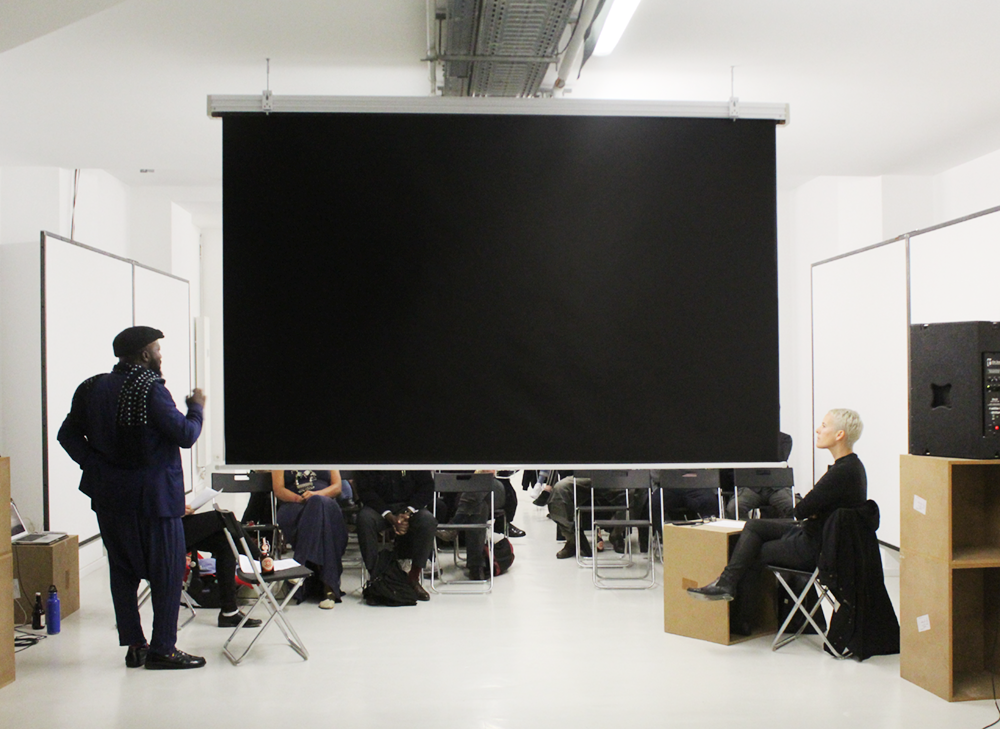Lying Truths
HOW DOES THE WORLD BREATHE NOW?
SESSION N°38 18.10.2017 19:00
with Ulf Aminde
FILM The Truth lies in Rostock–Die Wahrheit liegt (lügt) in Rostock 1993 78 minutes
BY Mark Saunders and S. Cleary
LANGUAGE German with English subtitles
For our 38th screening, Ulf Aminde brings us The Truth Lies in Rostock (1993) as a means to understand the history of violence towards immigrants in Germany and to offer an example of how filmmakers can use their medium to cause audiences to question dominant histories.
In August 1992, now twenty-five years ago, a days-long assault against asylum-seekers, Sinti and Roma people, and descendants of Vietnamese contract workers occurred. The residents of the ‘Sunflower House’ in Mecklenburger Allee 18/19, also the central location for arriving refugees, were attacked throughout these days by a group of up to 1000 people. A raucous crowd of up to 3000 observers stood by and applauded the scene. Once the police unjustifiably withdrew, the house was set on fire. Luckily no lives were lost.
This week of violence was racially motivated and tolerated by politicians and police. The attack was partially announced by leaflets that were then propagated further by the Press. Furthermore, the activities were backed by active Nazi structures and right extremist groups from other German states. The events led to changes shortly thereafter in the rights to asylum and to the eventual adoption of the so-called asylum compromise. What we today call the “Dublin Regulation” is a direct result of this pogrom.
The film The Truth Lies in Rostock, from Mark Saunders and S. Clearly, is predominantly composed of material that the besieged residents, themselves, captured. Neighbours, Nazis, politicians and police men and women in charge; as well as those who tried to help the residents, are all given a chance to speak. The film shows, with quiet clarity, how such a racially-motivated and socially-tolerated outbreak of violence could occur. Thus the film reveals, in all of its complexity, the condition of Rostock shortly after reunification. Taken from different perspectives, the film shows the perpetrators and people who reveled in the power that violence gave them, as well as those who were forced into victimhood against their will. By centering the perspectives of those who were made victims, the film also sheds light on the lies told by those responsible.
The film is particularly successful in anticipating our contemporary reality and showing how a certain racist and reactionary minority can gain in power. We knew already that right-wing extremists existed among us, and now we know what these tendencies lead to: a deeply anchored racism that is tolerated and finds its place in politics will send a signal to other extremists encouraging them to continue this madness. The question even arises, whether the whole NSU (National Socialist Underground) Complex, and the totally inadequate trial in Munich, is also a product of the development of this fascist and racist milieu and society’s tolerance of their violence.
I have chosen this film precisely because it neither relies on fiction nor on the imposition of a political hyperreality, but rather relies on the images that are somewhat familiar to us. This film reminds artists and filmmakers of our skill and potential to develop, through the material, a realism that does not only communicate content, but also asks, through its very construction, how it could possibly be that such images exist. This film is a manifesto of filmmaking, editing, and the performative potential of the camera. Because it is the camera that shows and makes showing concrete.
Ulf Aminde: On this evening I would also like to remember the victims of the NSU Complex, and for us to remind ourselves of the inadequate investigation, currently awaiting verdict in Munich, into the intertwined structures of racist perpetrators and state actors.
Ulf Aminde is an artist, filmmaker, and teaching activist. He teaches at the Weissensee Academy of Art in Berlin. There he initiated, in particular, the *foundationClass for Newcomers, intended for immigrants who would like to begin their studies of art in Germany. In Cologne he is developing a film and participation-based monument to the memory of those affected by the racist hate crimes perpetrated by the terrorist NSU network in Probsteigasse and on Keupstrasse. In his filmmaking practice, he concerns himself with the potential of self-empowerment through filming, alienation effects in documentary film, and strategies of subjectivization. He navigates categories of normalization and questions societal concepts such as discrimination and the exclusion of minorities. His filmwork is mostly characterized by collaboration and experimental practices of working together.
Exhibitions and actions include Berlin Biennial 4, KW Berlin, Volksbühne am Rosa Luxemburg Platz, Berlinische Galerie, NGBK Berlin, ZKM Karlsruhe, MARTa Herford, Steirischer Herbst, Schirn Frankfurt, Kästner Gesellschaft Hannover, MoCA Taipei, Kunstverein Heidelberg, Kunstverein Wolfsburg and Gallery Tanja Wagner.

